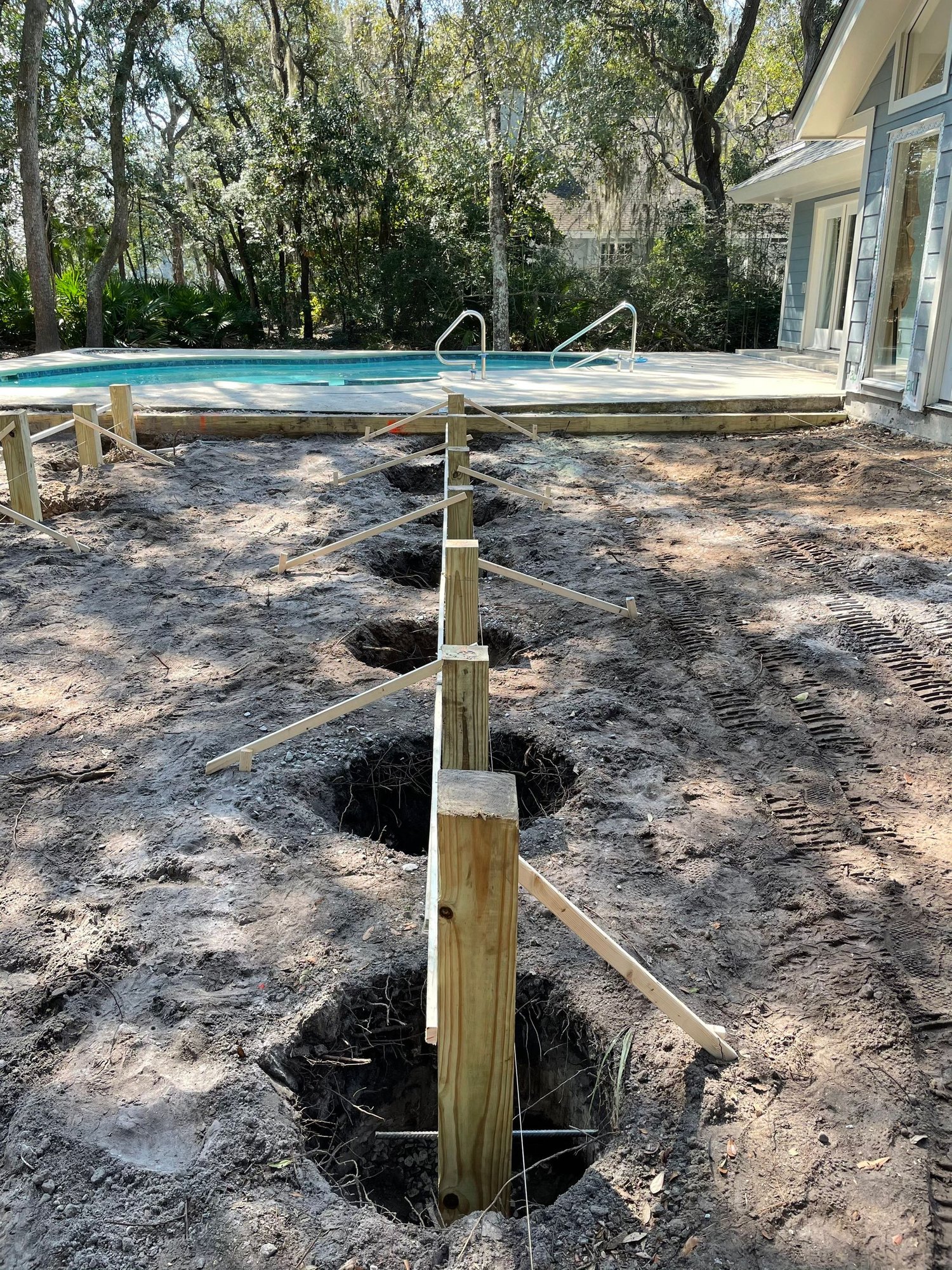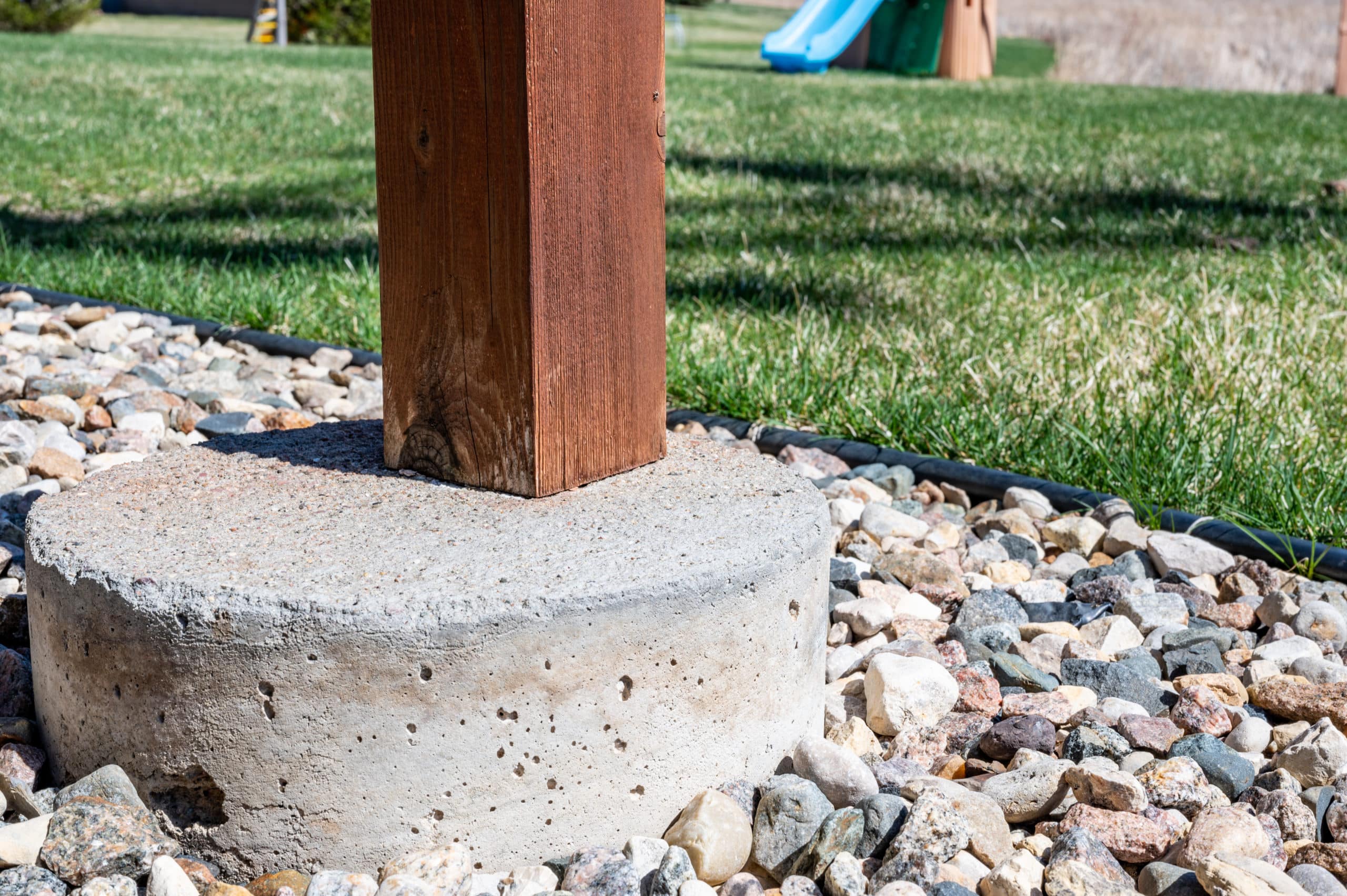Solid Ground, Solid Framework: The Essentials of Deck Footings Setup
Wiki Article
Boost Your Deck's Stability With Proper Deck Footing: Guarantee Durable Resilience and Safety And Security
When it involves building a deck, guaranteeing its security and longevity is of utmost importance. One essential aspect that often gets ignored is the appropriate installment of deck footings. These grounds act as the structure of your deck, offering the needed assistance and stability to stand up to the examination of time. By understanding the impact of soil problems and picking the best products, you can boost your deck's stability and guarantee its long-lasting durability and safety. So, how precisely do you deal with accomplishing this? In this conversation, we will check out the relevance of appropriate deck ground, overview you through the step-by-step procedure of setup, and highlight the relevance of normal upkeep to maintain your deck's stability.Why Appropriate Deck Footing Issues
Correct deck footing is essential for ensuring the stability and long-lasting resilience of any deck framework. The deck footing, or foundation, functions as the support factor for the whole deck, supporting the weight of the structure and moving it to the ground listed below - Deck Footings. Without a solid footing, a deck can end up being unstable, causing architectural failing and prospective safety dangers
Furthermore, proper deck ground aids to secure versus moisture damages. Moisture can seep right into the ground and weaken the structure, bring about rotting or decay. By using suitable materials and methods for the ground, such as helical heaps or concrete piers, the deck can be raised in the air, reducing call with moisture and lengthening its life-span.
Comprehending the Impact of Dirt Problems
The security and toughness of a deck structure can be greatly influenced by the soil problems in which it is built. Understanding the impact of dirt conditions is crucial for ensuring the durable resilience and safety and security of a deck. Various kinds of dirt have differing load-bearing abilities, drainage capacities, and development and tightening residential properties, which can all impact the stability of the deck.One essential variable to take into consideration is the soil's bearing capability, which refers to its ability to support the weight of the deck and any additional loads. Soils with high bearing capacities, such as compressed crushed rock or clay, are excellent for supporting hefty structures like decks. On the other hand, dirts with low bearing abilities, such as loosened sand or soft clay, might require additional procedures to improve security, such as deep grounds or dirt stabilization techniques.

In addition, the soil's tendency to acquire and increase with changes in wetness material can affect the stability of the deck. Soils with high clay content are vulnerable to considerable expansion and contraction, which can lead to resolving and shifting of the deck structure. Appropriate procedures, such as mounting wetness obstacles or utilizing alternate structure systems, may be needed to minimize the results of dirt activity.
Picking the Right Footing Materials
What elements should be thought about when picking the ideal ground materials for a deck? Choosing the best footing materials is essential for making sure the security and longevity of a deck. When making this choice., numerous elements need to be considered.To start with, the type of dirt in the location plays an important duty in figuring out the proper footing materials. Various soils have differing load-bearing capacities, so it is very important to choose materials that can sufficiently sustain the weight of the deck and any type of possible loads it might bear.
Secondly, the environment and weather of the area ought to be taken into consideration. In areas with extreme winter seasons or high degrees of moisture, footing products that are resistant to deterioration and degeneration, such as concrete or treated wood, are recommended. These materials are much more sturdy and less prone to harm from freezing temperatures, wetness, and insects.
Furthermore, the size and height of the deck likewise affect the option of footing materials. Larger and taller decks require even more significant footings to ensure stability and stop shifting or sinking. In such situations, products like helical piers or concrete footings may be preferable.
Lastly, spending plan factors to consider ought to not be forgotten. While some products may provide remarkable toughness and performance, they may also feature a higher price. When choosing the ideal footing products for a deck., it is crucial to strike a balance between expense and high quality.
Step-by-Step Overview to Installing Deck Footings
When mounting deck grounds, it is essential to comply with a step-by-step guide to guarantee security and durability. By complying with these steps, you can make sure that your deck will certainly be able to withstand the examination of time and give a satisfying and secure outside area for years to find.The initial step in mounting deck footings is to establish the place and layout of your deck. This consists of measuring and noting the location where navigate to this website the grounds will certainly be placed. It is necessary to make certain that the grounds are equally spaced and lined up with the deck's style.
Following, you will certainly need to dig the openings for the grounds. The deepness and diameter of the holes will certainly depend upon the dimension and weight of your deck. It is important to dig the holes deep sufficient to get to below the frost line to stop frost heave.
As soon as the openings are dug, you can start putting the concrete grounds. It is recommended to use a pre-mixed concrete mix for this action. Fill the holes with concrete, making certain that it is level and smooth. Use an article level to guarantee that the grounds are plumb.
After the grounds have been put, enable the concrete to cure for at the very least 2 days prior to continuing with the deck setup. This will certainly ensure that the grounds have actually set and are ready to sustain the weight of the deck.
Routine Upkeep to Protect Deck Security
To preserve the stability of your deck, routine maintenance is important. By executing a regular upkeep routine, you can ensure that your deck continues to be safe, long lasting, and visually appealing. One important aspect of upkeep is checking the deck for any signs of damage or wear. This consists of monitoring for broken or loose boards, rusted nails or screws, and any kind of indicators of rot or degeneration. It is important to address these concerns quickly to prevent further damage and potential safety hazards.Cleansing your deck consistently is another crucial upkeep job. Furthermore, consistently applying a safety sealant can help protect against wetness damage and lengthen the life of your deck.
In enhancement to these regular upkeep jobs, it is also advisable to carry out a complete assessment of the deck's architectural elements a minimum of yearly. This consists of examining the problem of the grounds, joists, light beams, and articles. Any kind of indicators of degeneration or weak point must be addressed immediately to make sure the ongoing stability and security of the deck.
Conclusion
To conclude, appropriate deck ground is important for making certain the resilient resilience and safety of your deck. Comprehending the influence of dirt problems and picking the appropriate footing materials are critical actions in this procedure. By adhering to a step-by-step overview to setting up deck footings and on a regular basis preserving them, you can my site enhance your deck's stability. Ultimately, these procedures will aid protect your deck's stability and make certain a pleasurable and risk-free outdoor area for several years to find.In this discussion, we will check out the significance of appropriate deck ground, guide you via the step-by-step procedure of installation, and highlight the relevance of regular maintenance to preserve your deck's stability.
Proper deck ground is vital for making sure the security and long-lasting toughness of any deck framework.One of the key factors why proper deck ground issues is to protect against the deck from moving or sinking over time (Deck Footings).In verdict, proper deck ground is important for making sure the long-lasting toughness and safety of your deck. By complying with a detailed guide to installing deck grounds go to this site and consistently maintaining them, you can boost your deck's stability
Report this wiki page